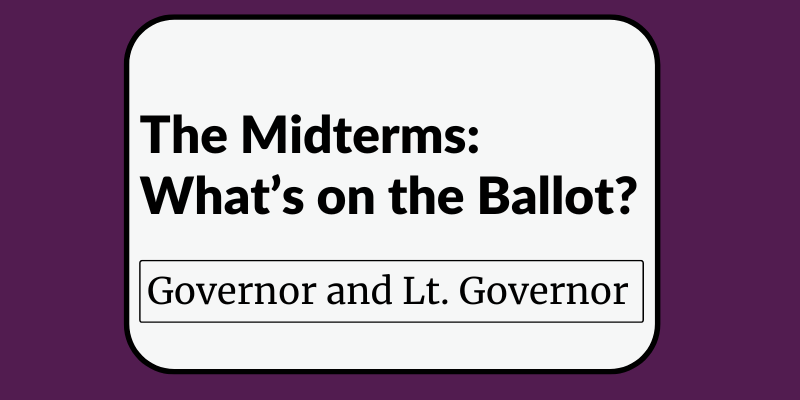
The Midterms: What’s on the Ballot? Governor and Lt. Governor
In the lead up to the midterm elections we’ll be taking some time to break down the key roles and responsibilities of the various offices voters will see on their ballot. This weekend we have a double feature: Governor and Lieutenant Governor.
What do the Governor and Lt. Governor do?
The Governor: Implements and enforces Wisconsin's laws. The governor appoints the heads of most state agencies (subject to senate approval). The governor proposes a budget and can propose legislation to the State Legislature. The governor can sign or veto legislation.
The Lt. Governor: Supports the governor in fulfilling their duties. If the governor cannot complete their term, the lieutenant governor becomes governor. The lieutenant governor may also temporarily serve as acting governor if the governor is out of state or unable to act. In addition, the lieutenant governor often supports the governor by taking a leadership role on councils, task forces, or committees focused on high priority issues.
During the primary election, voters cast votes for Governor and Lt. Governor separately. After the primary, the winners of each respective race are combined into the same ticket according to party. So in November, voters will vote for the Governor and Lt. Governor together.
Why does this matter?
The governor and the lieutenant governor are responsible for ensuring that the governor’s agenda and priorities are implemented across the state government. Who the governor appoints to lead state agencies makes a difference in what governmental programs are prioritized. Similarly, how the governor allocates funds determines how many resources state agencies have to complete their work. This affects the services the people of Wisconsin are able to access across the state.
The governor also has the ability to sign or veto legislation. This provides an important check and balance between the executive branch and the legislature.